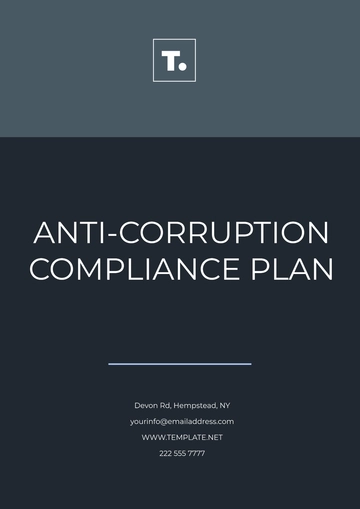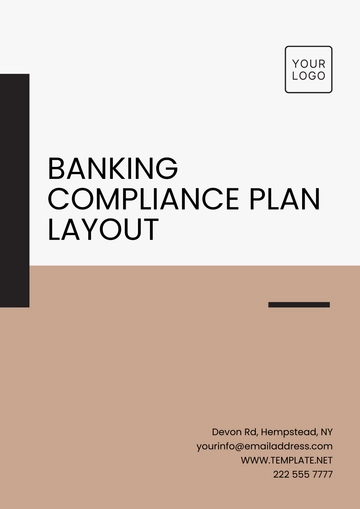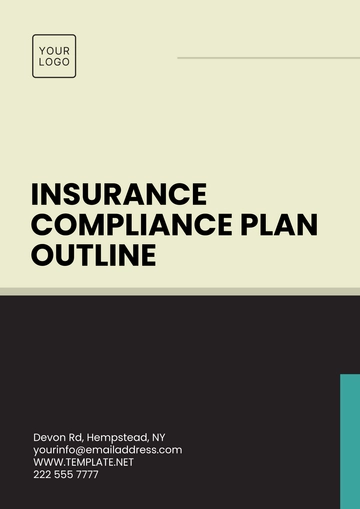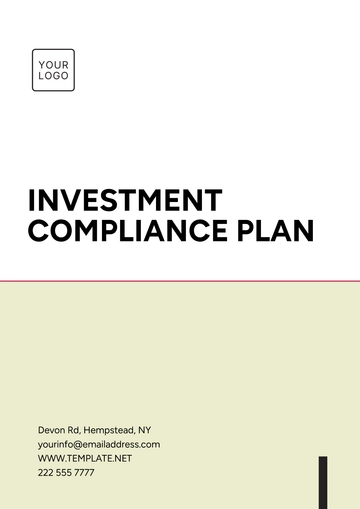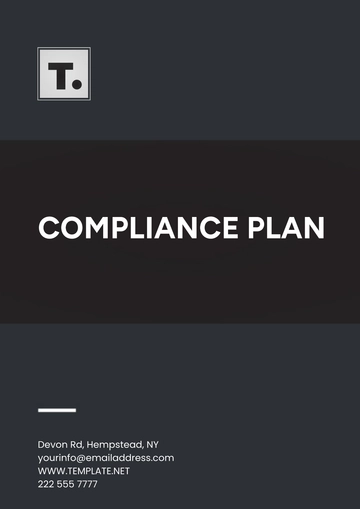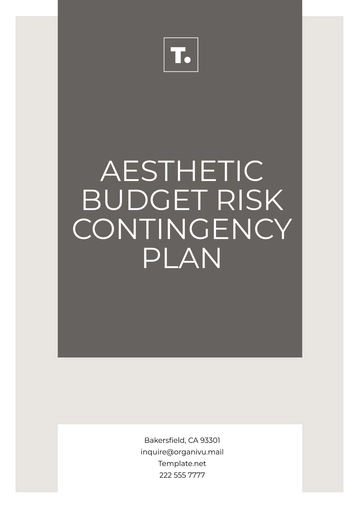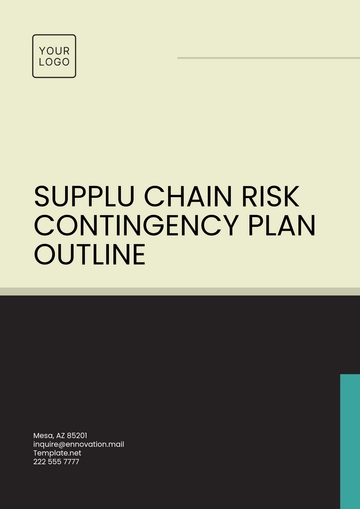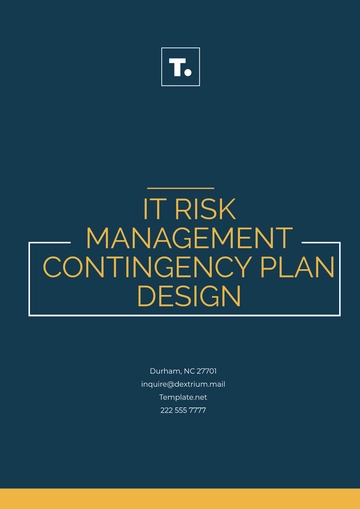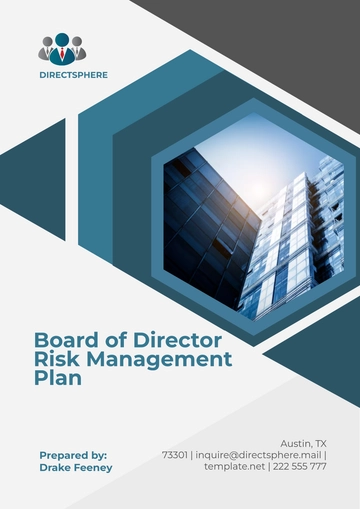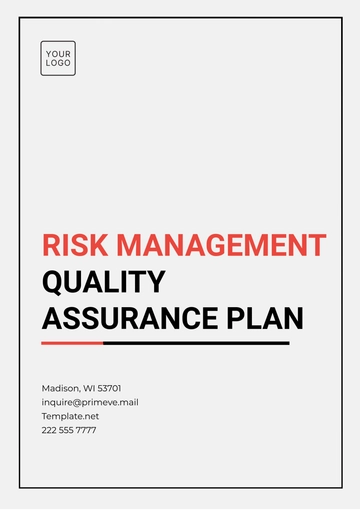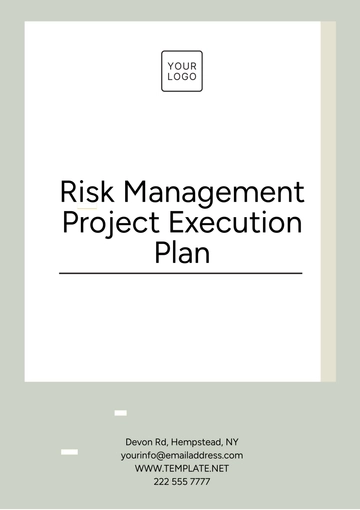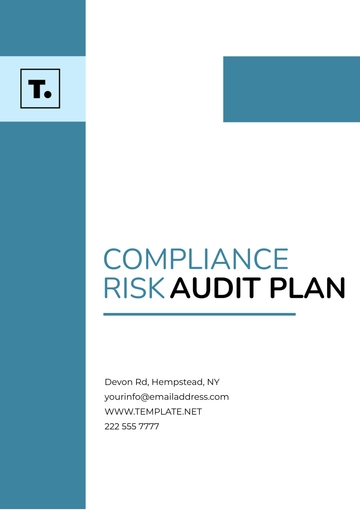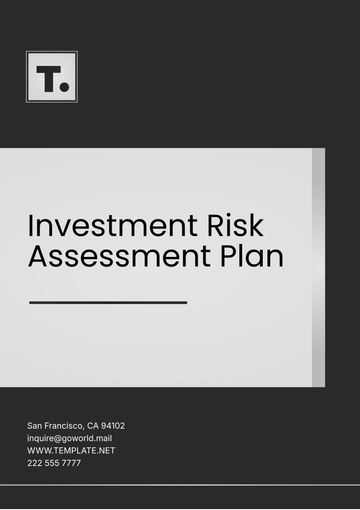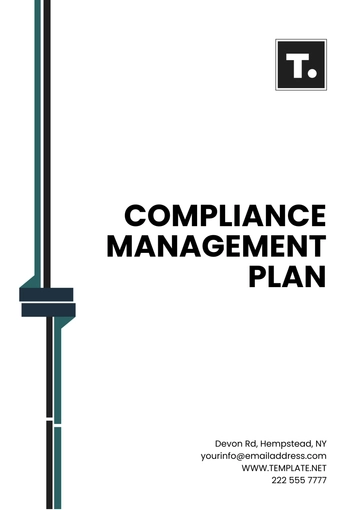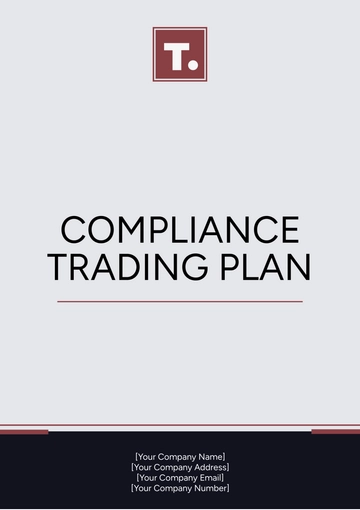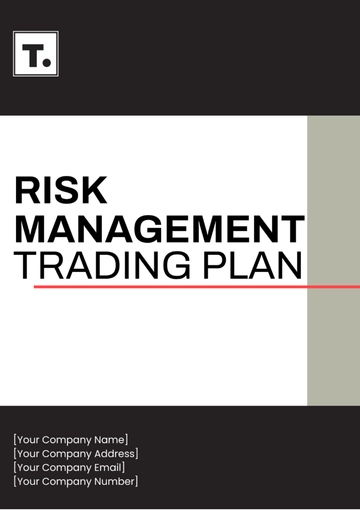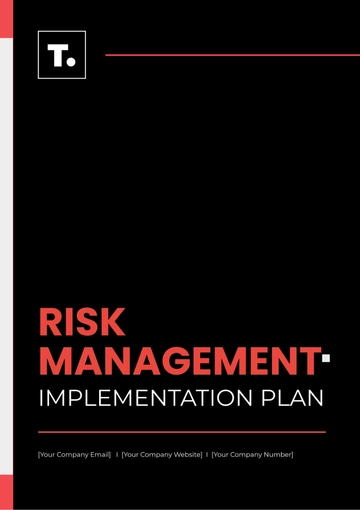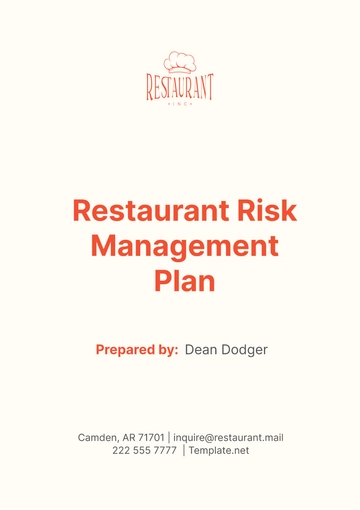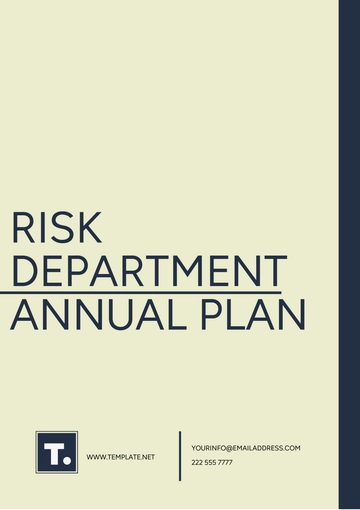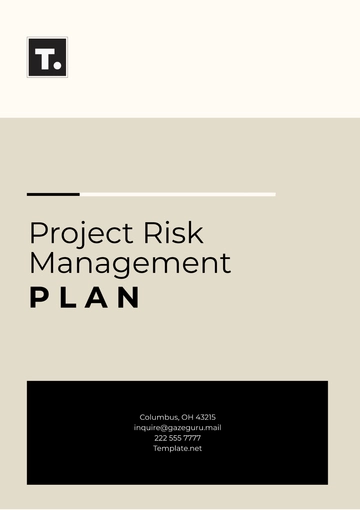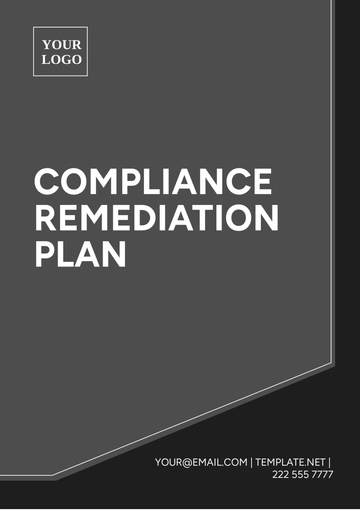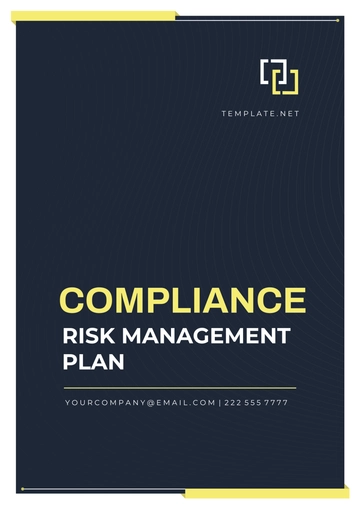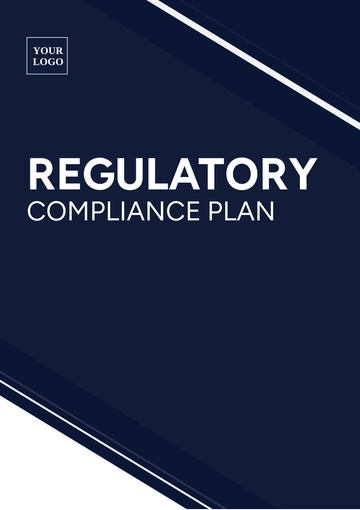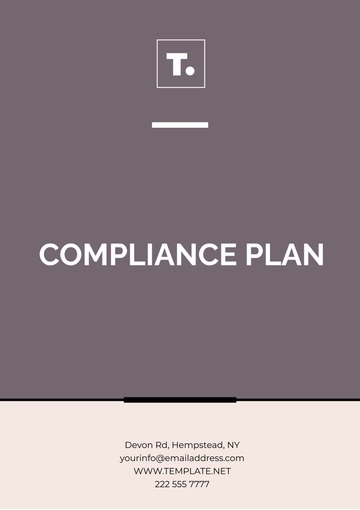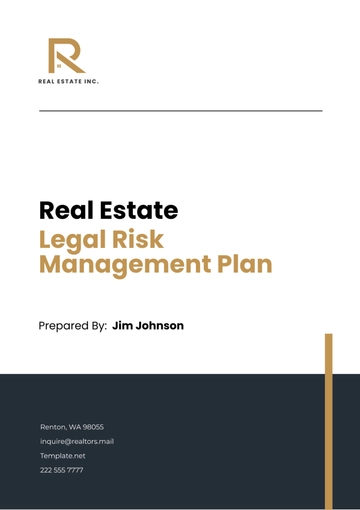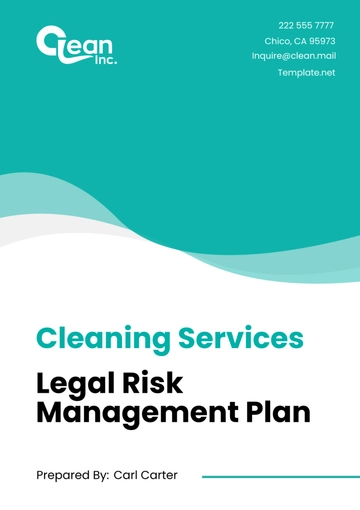Free Financial Annual Risk Strategy Plan
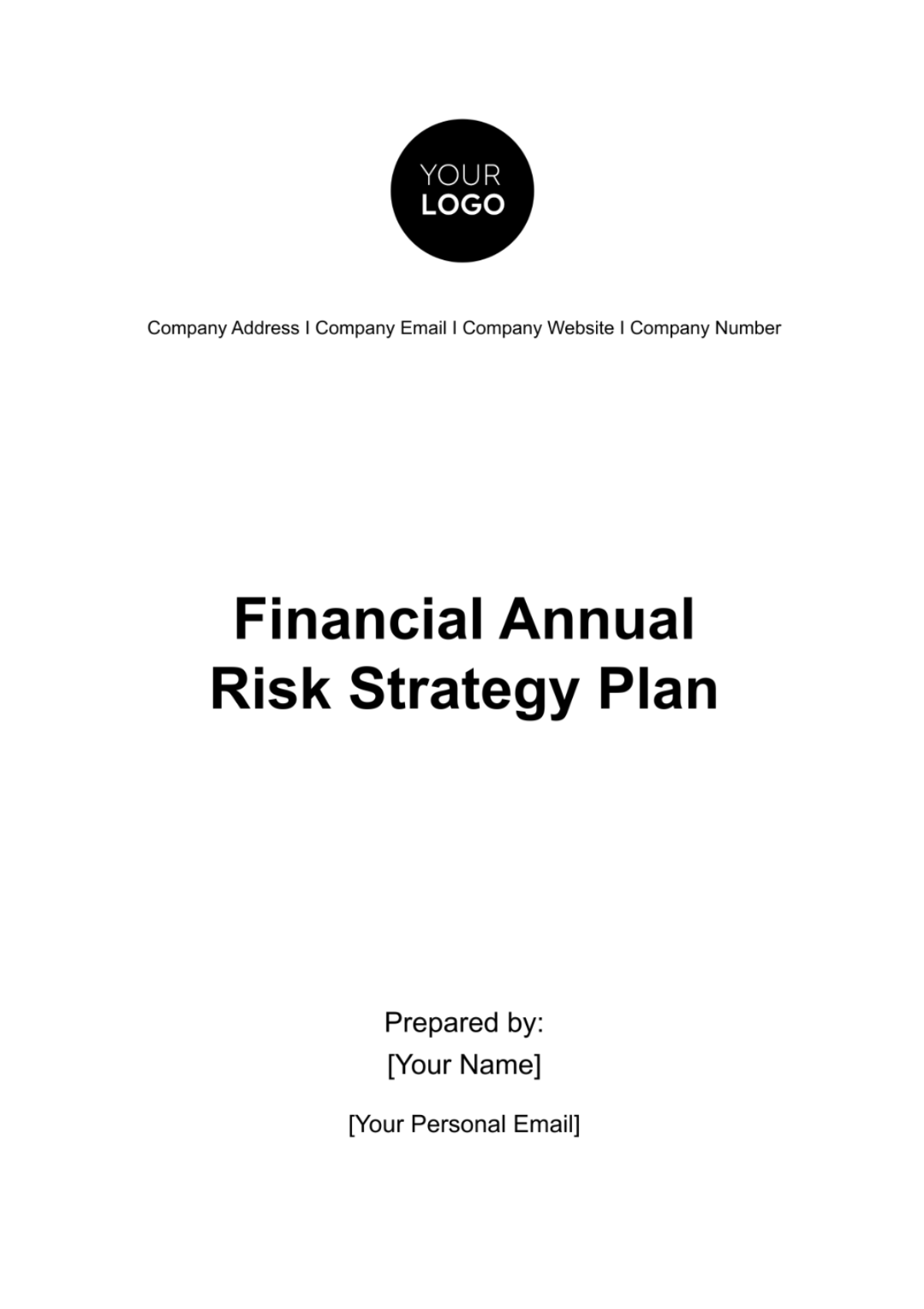
Executive Summary
[Your Company Name] is pleased to present the Financial Annual Risk Strategy Plan for [2050]. This comprehensive plan is designed to guide [Your Company Name] in navigating potential financial risks and ensuring the continued stability and growth of our organization.
A. Objective
The primary objective of this plan is to identify, assess, and effectively mitigate financial risks that could impact our financial health and hinder the achievement of our organizational objectives. By implementing strategic measures, we aim to proactively manage and mitigate these risks.
B. Scope
This plan encompasses a broad scope, addressing risks related to market dynamics, financial instruments, regulatory changes, and operational aspects that could influence the financial landscape. It provides a framework for comprehensive risk management across various facets of our financial operations.
Introduction
A. Background
[Your Company Name] operates in a dynamic economic environment characterized by evolving market conditions and regulatory landscapes. This plan is a response to the need for a proactive and systematic approach to identify, assess, and manage financial risks.
B. Significance
The significance of this Financial Annual Risk Strategy Plan lies in its role as a guiding document that not only safeguards [Your Company Name] against potential risks but also positions us to capitalize on opportunities arising in the financial landscape.
C. Alignment with Corporate Goals
This plan aligns with [Your Company Name]'s broader corporate goals by ensuring that financial risk management is integrated into our overall strategic planning process. By managing risks effectively, we aim to protect and enhance shareholder value.
D. Stakeholder Considerations
Consideration is given to the interests of our stakeholders, including shareholders, employees, customers, and regulatory bodies. By implementing robust risk management strategies, we aim to build trust and confidence among our stakeholders.
Risk Identification
A. Market Risks
Market risks are inherent in the fluctuating economic landscape. [Your Company Name] identifies potential market risks, including:
Currency Exchange Rate Fluctuations: Historically, these fluctuations have shown an average annual impact of [$500,000] on our financials.
Commodity Price Variations: Analysis indicates a potential impact of [$750,000] based on historical commodity price movements.
Geopolitical Events: Events such as trade tensions or political instability could impact revenues, with a potential risk exposure of [$1,200,000].
B. Financial Instruments Risks
[Your Company Name] assesses risks associated with specific financial instruments, such as [specify instruments]:
Interest Rate Swaps: Potential exposure of [$300,000] based on interest rate fluctuations.
Equity Investments: Historical analysis reveals a potential impact of [$600,000] due to market volatility.
Derivative Instruments: Exposure of [$400,000] based on the market value of derivatives in our portfolio.
Risk Assessment
A. Quantitative Analysis
A quantitative analysis reveals potential financial impacts:
Currency Fluctuations: Estimated impact of [$900,000] on net income.
Commodity Price Variations: Potential impact of [$1,200,000] on cost of goods sold.
Geopolitical Events: Projected impact of [$1,500,000] on overall revenues.
B. Qualitative Analysis
In addition to quantitative analysis, qualitative assessment factors include:
Industry Trends: Anticipating industry shifts to position [Your Company Name] strategically.
Regulatory Changes: Adapting to regulatory shifts with a focus on compliance and risk mitigation.
Market Sentiment: Monitoring market sentiment for potential impact on customer behavior and investor confidence.
C. Risk Matrix
A risk matrix categorizes risks:
Risk Category | Likelihood | Severity |
|---|---|---|
Currency Fluctuations | High | Medium |
Risk Mitigation Strategies
A. Hedging Strategies
[Your Company Name] implements robust hedging strategies to minimize exposure to market risks. Examples include:
Currency Hedging: Utilizing forward contracts to lock in favorable exchange rates, reducing the impact of currency fluctuations.
Commodity Hedging: Engaging in futures contracts to mitigate the impact of volatile commodity prices.
Interest Rate Hedging: Employing interest rate swaps to manage the risk associated with fluctuating interest rates.
B. Diversification
To enhance resilience, [Your Company Name] explores diversification strategies within the investment portfolio:
Geographic Diversification: Investing in diverse markets to mitigate risks associated with regional economic downturns.
Product Diversification: Expanding product offerings to reduce reliance on specific product lines.
Supplier and Customer Diversification: Establishing relationships with multiple suppliers and customers to mitigate concentration risk.
Monitoring and Reporting
A. Key Performance Indicators (KPIs)
To gauge the effectiveness of risk mitigation strategies, [Your Company Name] establishes key performance indicators:
Risk Exposure Ratio: Calculating the ratio of exposed assets to total assets to monitor risk concentration.
Hedge Effectiveness Ratio: Assessing the effectiveness of hedging strategies through periodic evaluations.
Portfolio Diversification Index: Measuring the degree of diversification within the investment portfolio.
B. Reporting Frequency
[Your Company Name] commits to regular and transparent reporting of financial risk management:
Monthly Risk Reports: Providing detailed analyses of risk exposure, mitigation efforts, and performance against established KPIs.
Quarterly Board Updates: Summarizing key risk indicators and outlining adjustments to risk management strategies.
Annual Stakeholder Reports: Communicating the overall effectiveness of the Financial Annual Risk Strategy Plan to stakeholders.
Compliance and Governance
A. Regulatory Compliance
[Your Company Name] is committed to ensuring compliance with financial regulations and standards. Key aspects include:
Regular Compliance Audits: Conducting regular audits to ensure adherence to evolving financial regulations.
Regulatory Updates Monitoring: Establishing a dedicated team to monitor and adapt to changes in financial legislation.
Transparent Reporting: Ensuring transparent communication with regulatory bodies, promptly reporting any required information.
B. Governance Structure
To oversee the implementation of the Financial Annual Risk Strategy Plan, [Your Company Name] establishes a robust governance structure:
Risk Management Committee: Forming a committee responsible for monitoring and reviewing the effectiveness of risk management strategies.
Board Oversight: Providing regular updates to the board on risk management initiatives and seeking their guidance on strategic decisions.
Executive Leadership Involvement: Ensuring key executives actively participate in decision-making processes related to risk management.
Contingency Planning
A. Scenario Analysis
[Your Company Name] conducts scenario analysis to prepare for potential extreme events. This involves:
Identifying High-Impact Scenarios: Considering various scenarios that could significantly impact financial stability.
Assessing Response Strategies: Developing response strategies tailored to each identified scenario.
Regular Scenario Reevaluation: Periodically reassessing and updating scenarios to remain adaptive to changing circumstances.
B. Crisis Communication Plan
In the event of a financial crisis, [Your Company Name] has a structured communication plan in place:
Clear Communication Protocols: Establishing clear lines of communication both internally and externally.
Designated Spokespersons: Designating specific individuals responsible for communicating with stakeholders, ensuring consistency and accuracy.
Stakeholder Notifications: Promptly notifying stakeholders, including investors, employees, and customers, with transparent and timely information.
Performance Evaluation
A. Metrics and Key Performance Indicators (KPIs)
[Your Company Name] recognizes the importance of continuous performance evaluation in ensuring the effectiveness of the Financial Annual Risk Strategy Plan. Key metrics and KPIs will be monitored closely to assess the impact of implemented strategies and identify areas for improvement.
Return on Investment (ROI): Evaluate the financial returns on risk management investments, comparing the actual returns against the projected outcomes.
Risk Reduction Metrics: Measure the reduction in risk exposure and financial vulnerabilities over time to ensure that mitigation strategies are yielding positive results.
Adaptability Index: Assess the plan's adaptability to changing market conditions, regulatory environments, and internal dynamics.
B. Feedback Mechanism
To facilitate ongoing improvement, [Your Company Name] encourages feedback from all stakeholders. Regular feedback sessions, surveys, and open forums will be conducted to gather insights, concerns, and suggestions regarding the effectiveness of the risk management strategies outlined in this plan.
Emerging Trends and Future Outlook
A. Industry Trends and Emerging Risks
Acknowledging the dynamic nature of the financial landscape, [Your Company Name] commits to staying abreast of emerging industry trends and potential risks. Regular analysis and market intelligence updates will be conducted to identify and proactively address new challenges and opportunities.
B. Strategic Adaptation
[Your Company Name] understands that the success of the Financial Annual Risk Strategy Plan depends on its adaptability to unforeseen circumstances. A dedicated team will be tasked with monitoring emerging risks and proposing strategic adaptations to the plan as needed.
Conclusion
[Your Company Name] affirms its commitment to proactive financial risk management through the Financial Annual Risk Strategy Plan. By identifying, assessing, and mitigating risks across various dimensions, we aim to fortify our financial position and enhance shareholder value. The strategies outlined in this plan align with our corporate goals, ensuring a resilient and adaptive approach to the dynamic economic landscape.
A. Key Takeaways
The comprehensive risk identification process covers market dynamics, financial instruments, and operational factors.
Robust risk mitigation strategies, including hedging and diversification, are employed to minimize the impact of potential financial risks.
Key performance indicators and reporting mechanisms are established to monitor the effectiveness of risk management strategies.
B. Continuous Improvement
[Your Company Name] acknowledges the dynamic nature of financial markets and commits to ongoing monitoring, evaluation, and adaptation of risk management strategies. This plan will be regularly reviewed and updated to address emerging risks and opportunities.
For any further inquiries, feedback, or clarification, please do not hesitate to contact:
[Your Name] [Your Company Email] [Your Company Number]
- 100% Customizable, free editor
- Access 1 Million+ Templates, photo’s & graphics
- Download or share as a template
- Click and replace photos, graphics, text, backgrounds
- Resize, crop, AI write & more
- Access advanced editor
Safeguard financial stability with the Financial Annual Risk Strategy Plan Template from Template.net. This editable and customizable plan simplifies strategy formulation. Tailor content effortlessly using our Ai Editor Tool, ensuring adaptability and precision. Elevate your risk management with this user-friendly template, offering a comprehensive approach to crafting personalized annual risk strategy plans for robust financial planning.
You may also like
- Finance Plan
- Construction Plan
- Sales Plan
- Development Plan
- Career Plan
- Budget Plan
- HR Plan
- Education Plan
- Transition Plan
- Work Plan
- Training Plan
- Communication Plan
- Operation Plan
- Health And Safety Plan
- Strategy Plan
- Professional Development Plan
- Advertising Plan
- Risk Management Plan
- Restaurant Plan
- School Plan
- Nursing Home Patient Care Plan
- Nursing Care Plan
- Plan Event
- Startup Plan
- Social Media Plan
- Staffing Plan
- Annual Plan
- Content Plan
- Payment Plan
- Implementation Plan
- Hotel Plan
- Workout Plan
- Accounting Plan
- Campaign Plan
- Essay Plan
- 30 60 90 Day Plan
- Research Plan
- Recruitment Plan
- 90 Day Plan
- Quarterly Plan
- Emergency Plan
- 5 Year Plan
- Gym Plan
- Personal Plan
- IT and Software Plan
- Treatment Plan
- Real Estate Plan
- Law Firm Plan
- Healthcare Plan
- Improvement Plan
- Media Plan
- 5 Year Business Plan
- Learning Plan
- Marketing Campaign Plan
- Travel Agency Plan
- Cleaning Services Plan
- Interior Design Plan
- Performance Plan
- PR Plan
- Birth Plan
- Life Plan
- SEO Plan
- Disaster Recovery Plan
- Continuity Plan
- Launch Plan
- Legal Plan
- Behavior Plan
- Performance Improvement Plan
- Salon Plan
- Security Plan
- Security Management Plan
- Employee Development Plan
- Quality Plan
- Service Improvement Plan
- Growth Plan
- Incident Response Plan
- Basketball Plan
- Emergency Action Plan
- Product Launch Plan
- Spa Plan
- Employee Training Plan
- Data Analysis Plan
- Employee Action Plan
- Territory Plan
- Audit Plan
- Classroom Plan
- Activity Plan
- Parenting Plan
- Care Plan
- Project Execution Plan
- Exercise Plan
- Internship Plan
- Software Development Plan
- Continuous Improvement Plan
- Leave Plan
- 90 Day Sales Plan
- Advertising Agency Plan
- Employee Transition Plan
- Smart Action Plan
- Workplace Safety Plan
- Behavior Change Plan
- Contingency Plan
- Continuity of Operations Plan
- Health Plan
- Quality Control Plan
- Self Plan
- Sports Development Plan
- Change Management Plan
- Ecommerce Plan
- Personal Financial Plan
- Process Improvement Plan
- 30-60-90 Day Sales Plan
- Crisis Management Plan
- Engagement Plan
- Execution Plan
- Pandemic Plan
- Quality Assurance Plan
- Service Continuity Plan
- Agile Project Plan
- Fundraising Plan
- Job Transition Plan
- Asset Maintenance Plan
- Maintenance Plan
- Software Test Plan
- Staff Training and Development Plan
- 3 Year Plan
- Brand Activation Plan
- Release Plan
- Resource Plan
- Risk Mitigation Plan
- Teacher Plan
- 30 60 90 Day Plan for New Manager
- Food Safety Plan
- Food Truck Plan
- Hiring Plan
- Quality Management Plan
- Wellness Plan
- Behavior Intervention Plan
- Bonus Plan
- Investment Plan
- Maternity Leave Plan
- Pandemic Response Plan
- Succession Planning
- Coaching Plan
- Configuration Management Plan
- Remote Work Plan
- Self Care Plan
- Teaching Plan
- 100-Day Plan
- HACCP Plan
- Student Plan
- Sustainability Plan
- 30 60 90 Day Plan for Interview
- Access Plan
- Site Specific Safety Plan
